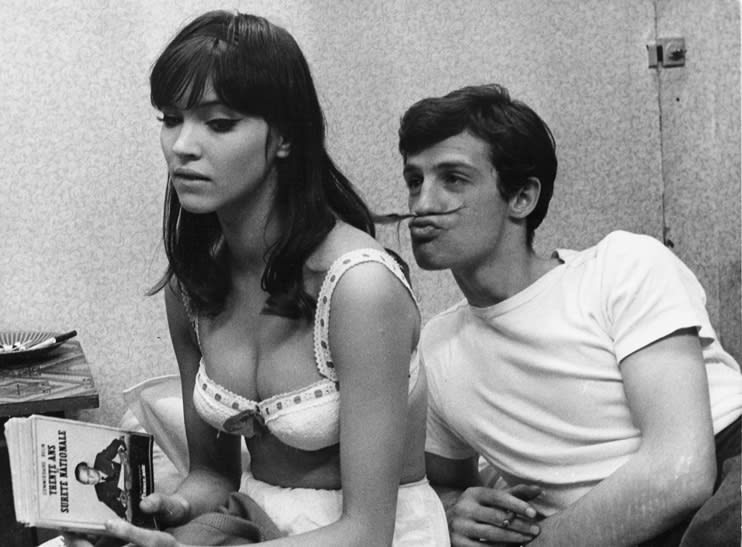Raymond Cauchetier 1920-2021
Une Femme Est Une Femme (Paris), 1960
Gelatin Silver Print
23.8 x 29.8 cms
9 5/16 x 11 11/16 ins
9 5/16 x 11 11/16 ins
6213
Printed 2015 Paper Size: 30 x 40 cm Edition of 20 Each photograph is signed and numbered by the artist. Anna Karina and Jean-Paul Belmondo sharing a candid moment on...
Printed 2015
Paper Size: 30 x 40 cm
Edition of 20
Each photograph is signed and numbered by the artist.
Anna Karina and Jean-Paul Belmondo sharing a candid moment on set during filming of Une femme est une femme (A Woman Is a Woman).
For Cauchetier, good photo for me is not necessarily a good picture, well laid out on the page, well framed and well polished. It must express life, through the look or gesture. Otherwise, it remains empty. I am not an artist, I am a reporter. One does not recreate.
The film centers around the relationship of an exotic dancer named Angela (Karina) and her lover Emile (Jean-Claude Brialy). Angéla wants to have a child, but when Emile refuses to commit, she turns her romantic attentions to his best friend Alfred (Belmondo), who is in love with her. The storyline provides a framework for improvisation and stylistic experimentation, including several light-hearted dance sequences; critics consider the film to be Jean-Luc Godard's tribute to American musical comedy.
Paper Size: 30 x 40 cm
Edition of 20
Each photograph is signed and numbered by the artist.
Anna Karina and Jean-Paul Belmondo sharing a candid moment on set during filming of Une femme est une femme (A Woman Is a Woman).
For Cauchetier, good photo for me is not necessarily a good picture, well laid out on the page, well framed and well polished. It must express life, through the look or gesture. Otherwise, it remains empty. I am not an artist, I am a reporter. One does not recreate.
The film centers around the relationship of an exotic dancer named Angela (Karina) and her lover Emile (Jean-Claude Brialy). Angéla wants to have a child, but when Emile refuses to commit, she turns her romantic attentions to his best friend Alfred (Belmondo), who is in love with her. The storyline provides a framework for improvisation and stylistic experimentation, including several light-hearted dance sequences; critics consider the film to be Jean-Luc Godard's tribute to American musical comedy.




